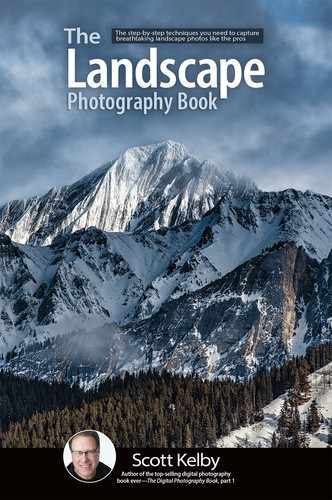When to Use Ultra-Wide Lenses

Although you now know my personal “sweet spot” for full-frame landscape lenses would be around 24mm (or 18mm on a crop-sensor camera), are there any times where you might want to go wider than usual? Well, if you have something really close as your foreground, like a large rock, or a piece of driftwood, then ultra-wides can look really great. Also, when you’re shooting a waterfall, or shooting in a forest, or shooting in a canyon slot, or shooting the Milky Way (see Chapter 7), or . . . well . . . you can see there are a few times where an ultra-wide-angle might come in handy. It won’t be your mainstay for landscapes because it pushes things away from the camera (so big mountains in the distance become much smaller), but if you’re shooting with a full-frame camera, you can swing something like Tamron’s 15–30mm, Nikon’s 14–24mm, Sony’s 12–24mm, or Canon’s 11–24mm, and then you’ll have a lot of options (but note that these lenses are all pretty large and heavy). Much smaller, lighter, and much cheaper are the crop-sensor lenses in the 10mm and 12mm range (Canon, Nikon, Sony, Tamron, and Sigma all make ultra-wide zooms in the 10–24mm or 10–22mm range for crop-sensor cameras), and yes, you’ll need to go that wide on crop-sensor bodies to get what you’d call an ultra-wide field of view.
